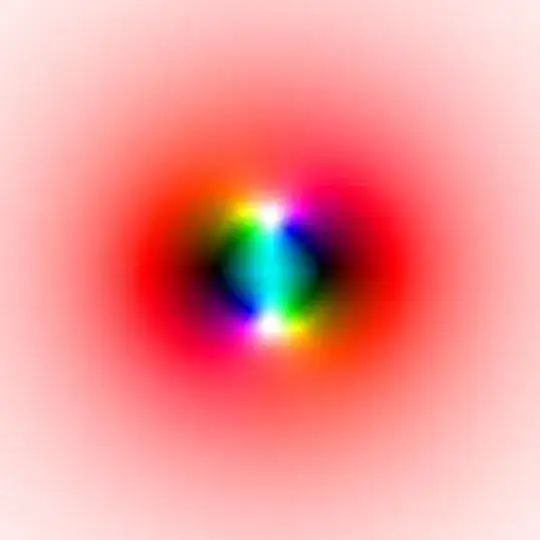Calculate:$$\frac{ \left| x \right| }{2}= \frac{1}{x^2+1}$$
How do I write the whole process so it will be correct? I need some suggestions. Thank you!
Calculate:$$\frac{ \left| x \right| }{2}= \frac{1}{x^2+1}$$
How do I write the whole process so it will be correct? I need some suggestions. Thank you!
Split it into two cases. First case is $$\frac{x}{2}=\frac{1}{x^2+1}.$$ If it has a positive solution (or more than one), it is a valid solution. Second case is $$\frac{-x}{2}=\frac{1}{x^2+1}.$$ If it has a negative solution (or more than one), then it is a valid solution.
The valid solutions from both cases are all your solutions to the original problem.
Let $y = \vert x \rvert \ge 0$. Then you have
$$y(y^2+1)=2 \implies y^3 +y - 2 = 0 \implies (y-1)(y^2+y+2)=0$$
The second factor cannot be zero for non-negative $y$, so you have only one solution $y=1 \implies x = \pm1$.
If $x=a+ib$ where $a,b$ are real
We have $$\frac{\sqrt{a^2+b^2}}2\left(a^2-b^2+2abi+1\right)=1$$
Equating the imaginary parts, $\displaystyle ab=0$
If $\displaystyle a=0, \frac{|b|}2(1-b^2)=1$
Use for real $b,|b|=\begin{cases} +b &\mbox{if } b\ge0 \\ -b & \mbox{if } b<0\end{cases}$
If $\displaystyle b=0, \frac{|a|}2(1+a^2)=1$
Set $x=r(\cos\phi+i\sin\phi)$ where $r>0, \phi$ are real
So using de Moivre's formula, $ x^2=r^2(\cos2\phi+i\sin2\phi)$
So we have $\displaystyle \frac r2\left(r^2(\cos2\phi+i\sin2\phi)+1\right)=1$
Equating the imaginary parts, $\displaystyle r^3\sin2\phi=0$
Clearly, $\displaystyle r\ne0\implies \sin2\phi=0\implies2\cos\phi\sin\phi=0$
If $\displaystyle\sin\phi=0, r^3+r-2=0$
Clearly, $r=1$ is a solution, so please solve the Quadratic Equation $\displaystyle\frac{r^3+r-2}{r-1}=0$
If $\displaystyle\cos\phi=0, r^3-r+2=0$ whose solution is not so smooth
By "calculuate", I presume you mean "solve for $x$". In that case, simply write two variations of the equation:
$$\frac{ x }{2}=\frac{1}{x^2+1}$$
and
$$\frac{ -x }{2}=\frac{1}{x^2+1}.$$
The solution set of you're original equation is the union of the solution sets of these two.
I'd like to offer a different approach to @labbhattacharjee's attempt to solve the equation over $\mathbb C$.
$$\frac{|x|}{2}=\frac{1}{x^2+1}$$
The left hand side is real, so at minimum the right hand side has to be real. The inverse of a real number is real, so $x^2+1$ is real, and the reals are closed under addition, so $x^2$ is real. Thus $x$ is either purely imaginary or purely real. The latter case has already been solved, and in the prior case, the equation reduces to:
$$\frac{|\Im(x)|}{2}=\frac{1}{-\Im(x)^2+1}$$
Which can presumably be solved for a real variable in much the same way as the original equation.
Here's a plot of $\frac{ \left| x \right| }{2}-\frac{1}{x^2+1}$ in the complex plane (with corners at $-5-5i$ and $5+5i$):

The zeros at $x=\pm 1$ are visible as black sinks. The colorizing is such that modulus is encoded as brightness and phase is encoded as hue. Not meant to be taken as a serious answer, but meant to be a visual supplement.